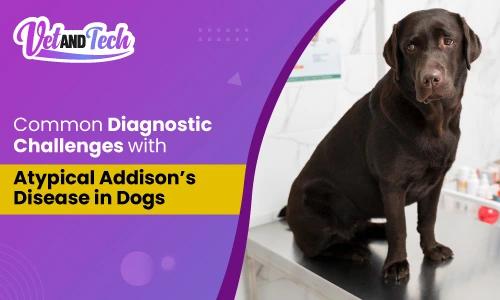Pruritus in dogs: Diagnosis, Prevention and Effective Treatment Plan
Dogs are comparatively more sensitive to itching, and not every dog overcomes the condition because of its severity. According to statistics, pruritus or canine itching is a frequent disorder among dogs, and around 15 million dogs in the US are affected.
It is not just irritating the dog; irrational scratching, licking, and chewing at the skin can cause secondary bacterial, fungal, or mite infections, discomfort, and a decline in the dogs’ overall well-being. Vets often find it difficult to deal with this canine condition.
This blog post will describe the various origins of pruritus and discuss the different approaches to the diagnosis, plus treatment of pruritus in dogs. In addition, you’ll get to know about the upcoming veterinary webinar on pruritus, where you can learn from an expert speaker instructing on canine pruritus complications.
What is Pruritus in Dogs? Common Causes
Canine Itching is a common complaint, affecting millions of canine companions in the US alone. Although scratching may seem simple, finding the exact cause is a complex process that requires expertise.
As a veterinarian, it is essential to be precise when determining the actual cause of pruritus in dogs. Below are some common causes that either originate or instigate itching in dogs and other animals. For a deeper understanding, you can explore the Webinar on Pruritus in Dogs to enhance your diagnostic and treatment approach.
Parasites
Fleas, mites (especially sarcoptic mange mites), and ticks cause severe dog itching. Flea Allergy Dermatitis (FAD) is a prevalent cause. For dogs with FAD, even one flea bite might cause severe inflammation.
Allergies
Food and environmental allergies (atopy) in dogs can cause itchy skin in dogs. Food allergies cause generalized itching, whereas atopy causes seasonal flare-ups and irritation of the paw, cheek, ear, and abdomen.
Endocrine disorders
Hypothyroidism, hyperadrenocorticism (Cushing's disease), and diabetes can alter the skin barrier, which may lead to secondary infections as a result of itching and pruritus.
Infections
Yeast and bacterial infections can also cause severe itching in canines. These infections generally result from allergies or skin barrier failure.
Autoimmune diseases
Some autoimmune diseases, like pemphigus, affect healthy skin tissues, possibly leading to blisters and itching.
Diagnosing the Cause of Pruritus in Dogs:
A precise diagnosis of dog pruritus helps devise a proper treatment plan that ascertains the dog patient's quick recovery and optimal health.
Here's a typical roadmap veterinary dermatologists should follow:
Detailed history
A thorough physical examination includes assessing the dog for common dog diseases by inquiring about the breed, age, feeding habits, and reviewing any past illnesses and medications the dog has encountered.
Specific questions about the itching may be a practical way of getting more details from the patient, including where the itch is, how severe it is, whether it is seasonal, etc.
Physical examination
During the physical examination, the physician should look for flea bites, skin scrapings or allergies, lesions indicative of abnormal skin or reactions to allergens, or infected skin. Veterinarians must also examine ears for external otitis, which is often a complication resulting from different allergies and infections.
Diagnostic tests
Depending on the initial findings, veterinarians may recommend the following tests, including;
- Skin Cytology
Examining skin scrapings under a microscope can reveal the presence of parasites, bacteria, or yeast.
- Blood tests
A blood test may be recommended to discover underlying endocrine disorders in dogs contributing to the pruritus.
- Skin biopsies
In some cases, taking a small skin sample and analyzing it under a microscope can diagnose certain skin diseases definitively.
- Allergy testing
Various tests, including blood and intradermal skin tests, can help identify allergens that trigger the dog's itch.
Join Our Webinar on Pruritus in Dogs with Dr. Rosanna Marsella
The most crucial information for diagnosing and treating pruritus in dogs is equally vital to ensure you are current on the most recent knowledge.
We invite you to our upcoming veterinary webinar titled "Pruritus: Diagnostic Approach and Management in Dogs."

Schedule and Speaker:
- June 19th, 2024
- 08:00 PM Eastern Time (US)
- Expert speaker: Dr Rosanna Marsella
During this webinar, approved by the RACE, Dr. Marsella will facilitate an examination of the intricacies involved in detecting and treating pruritus in dogs.
The speaker will provide you with information on how to establish effective treatment plans for your patients, as well as modern diagnostic techniques, the most recent therapy alternatives, and practical advice.
Key Takeaways from the Webinar:
- Refine your diagnostic approach to pruritus, including a detailed discussion of advanced diagnostic tools.
- Gain insights into the latest treatment modalities for various causes of pruritus in dogs.
- Develop effective treatment plans tailored to your canine patients' specific needs.
- Earn 1 CE credit approved by RACE for attending the live webinar.
Register for the webinar today, and don't miss this opportunity to enhance your expertise in managing dog pruritus.
Developing an Effective Treatment Plan for Pruritus in Dogs
Identifying the underlying cause of pruritus is crucial, as it allows for the establishment of an effective treatment plan for dog pruritus, which can be straightforward once the diagnosis is clear.
Here's an overview of common treatment approaches:
- Parasite control
Regular use of broad-spectrum flea and tick preventatives is crucial for managing FAD and preventing other parasitic infestations.
- Antibiotics or antifungals
If a bacterial or yeast infection is diagnosed, treatment with appropriate antibiotics or antifungals will be necessary.
A hypoallergenic diet elimination trial is often recommended for dogs with food allergies to identify the offending food triggers.
- Antihistamines and corticosteroids
These medications can help manage inflammation and itching associated with allergies.
- Immunotherapy
Immunotherapy can be a long-term solution for dogs with severe environmental allergies, gradually desensitizing them to the allergens.
- Essential fatty acids and topical therapies
Supplementation with essential fatty acids can improve skin health and barrier function, while topical corticosteroids and other medications can relieve localized itch.
- Management of underlying condition
If an underlying disorder like hypothyroidism is contributing to pruritus, treating the primary condition will be crucial for long-term management.
Home Remedies for Pruritus in Dogs
As expected, anyone who owns a pet, especially a dog, will always search for ways to reduce their dog's itching at home. Nevertheless, knowing that home remedies cannot replace professional veterinary care is crucial.
Here are some strategies that can always be applied in consultation with the vet but are not the ultimate solution:
Oatmeal Baths
- Grind oatmeal into a fine powder.
- Create a paste with warm water.
- Add the paste to your dog's bathwater.
- Let your dog soak for 10-15 minutes.
- Rinse thoroughly and pat dry.
Fish Oil Supplements
- Consult your veterinarian about the appropriate dosage.
- Fish oil is rich in omega-3 fatty acids, which can benefit skin health and reduce inflammation.
Apple Cider Vinegar (ACV)
- Dilute ACV (50% water, 50% ACV).
- Use as a spot treatment for mild itching.
- Apply with a washcloth, avoiding broken skin.
Coconut Oil
- Look for pet-safe coconut oil.
- Perform a patch test on a small area before applying liberally.
- Apply topically to moisturize dry, itchy skin.
Important Considerations:
- Consult vets before using home remedies for dog pruritus, especially if the dog has a pre-existing skin disease or is receiving drugs.
- After employing a home treatment, watch your dog. Discontinue usage and visit your vet if itching or skin irritation worsens.
- Home cures should not substitute veterinarian diagnosis and treatment. They can temporarily relieve pruritus but will not treat the problem.
Effective Strategies to Prevent Dogs Pruritus:
Although not all occurrences of pruritus are avoidable, you may advise dog owners to take the following actions to reduce the likelihood that their furry friends will get itchy skin:
- It is imperative to implement a year-round flea and tick prevention program. Talk with pet owners about the several choices—topical drugs, oral chewables, and collars.
- A healthy skin barrier promoted by a balanced diet high in essential fatty acids lowers the chance of infections and allergic responses.
- Atopy dogs need to be aware of and exposed to allergens as little as possible. To help lower airborne allergens, routinely vacuum, wash bedding, and use air purifiers.
- You can easily evade dryness and irritation with regular brushing and mild shampoos designed for sensitive skin.
Wrapping Up!
Vet and Tech strive to provide veterinary professionals with advanced knowledge and resources, meeting their CE needs. We conduct regular productive free webinars that enable vet professionals to obtain free RACE-approved CE credits.
Our blog section offers accurate and up-to-date information on the industry, such as career and educational guidance.









